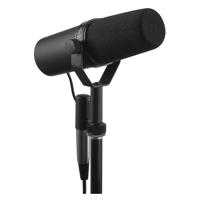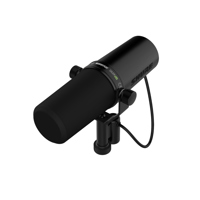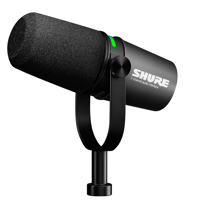If you’re an audio professional or simply enjoy creative
pursuits in your free time, chances are you’ll need to use a dynamic microphone
at some point to record your tracks. A dynamic
microphone differs from other mics because it converts sound waves into
electrical signals via a moving coil.
The microphone consists of a diaphragm, a coil of wire, and
a magnet. When sound waves reach the diaphragm, they make it vibrate. This
vibration causes the coil of wire to move, which then creates an electrical
current.
You can then amplify the electrical signal and send it to a
sound system or recording device.
What Are the Most Common Uses for Dynamic Microphones?
Dynamic microphones are commonly used in live sound reinforcement
and recording applications. They’re more durable than other types of
microphones, and they’re relatively feedback-resistant.
If you want to amplify or record vocals, drums, and other
instruments, you should consider using a dynamic microphone. That’s because
they provide a good balance of high and low frequencies, which produces
accurate and distortion-free sound.
Different Polar Patterns in Dynamic Mics
Dynamic microphones come in a few different polar patterns.
Each polar pattern has its own specific uses and benefits.
Cardioid
Cardioid polar patterns are sensitive to noise coming
directly from the front of the microphone. They’re useful for capturing audio
while eliminating most background noise. They also help separate audio from
individual performers because they’re so directional.
Hypercardioid and Supercardioid
Hypercardioid and supercardioid polar patterns are similar
to each other, with a few small differences. Both are more sensitive than
cardioid microphones when capturing sounds coming from the front. They’re also
better at eliminating sounds from the sides of the microphone. This feature
comes in handy when you want to isolate the sound of a voice or instrument.
Both supercardioid and hypercardioid microphones also
capture some audio from the rear center of the microphone. This is useful for
picking up some room sound, which adds depth.
When using either of these microphones, make sure to speak,
sing, or play directly into the front of the microphone for the best audio
capture.
Omnidirectional
Omnidirectional microphones capture audio from all sides of
the microphone. They’re ideal for recording ambient sounds, such as rain
sounds, an audience, or multiple vocalists in a chorus. Because they record
from all sides, they’re more sensitive to background noise.
Audio Kits Featuring Dynamic Microphones
If you’re new to audio recording, investing in a dynamic
microphone kit or bundle is a smart way to get all the accessories you need
while guaranteeing compatibility. Look for kits with one or more microphones,
mounts, filters, and cords for out-of-the-box functionality.
The Best Dynamic Microphones
Sennheiser,
Rode,
Heil
Sound, H&A,
and Laird
are known for their professional-grade audio equipment. Selecting dynamic
microphones by these and other trusted audio brands sets you up for recording
and performance success.



